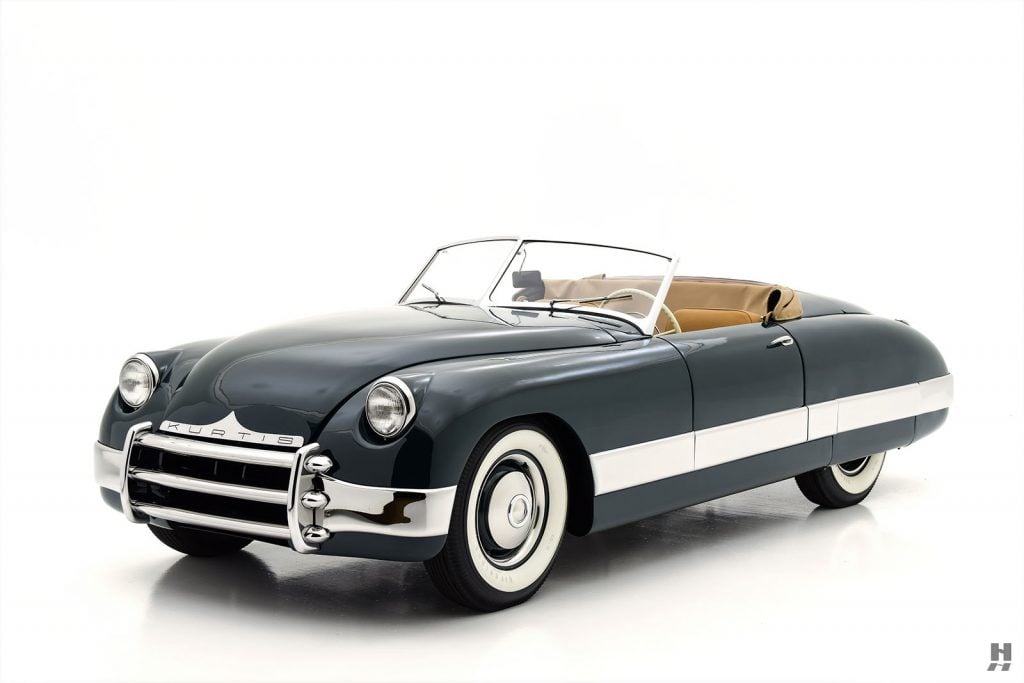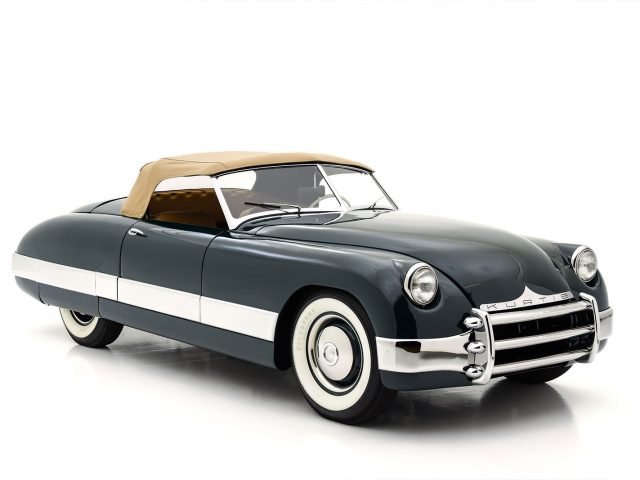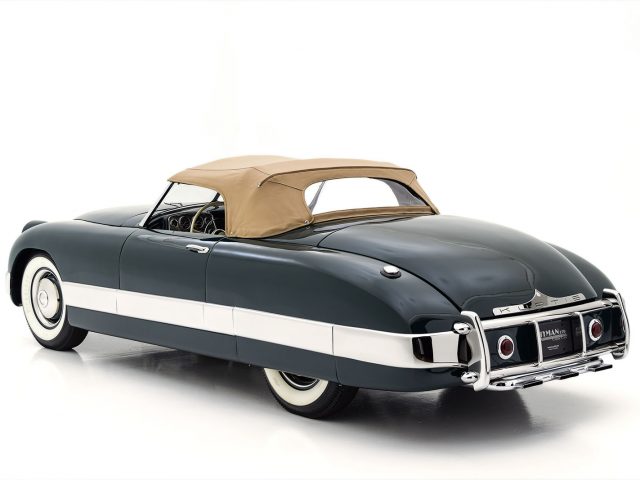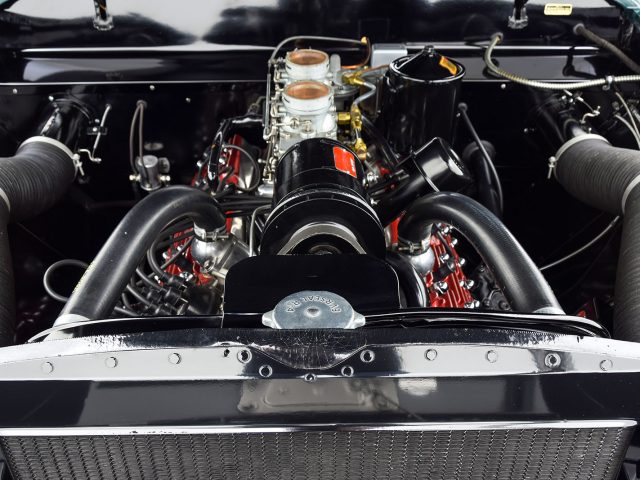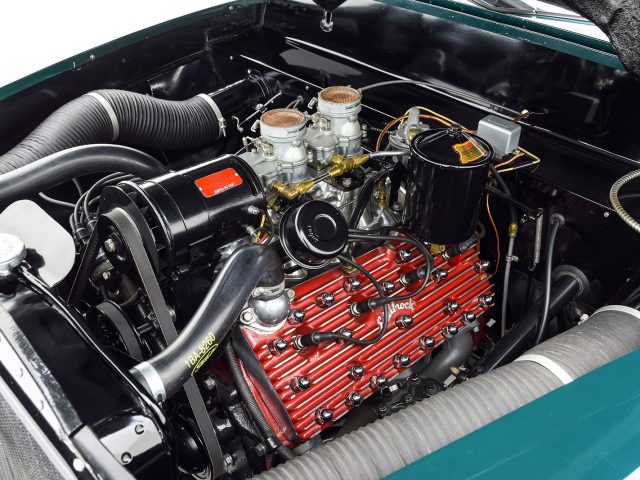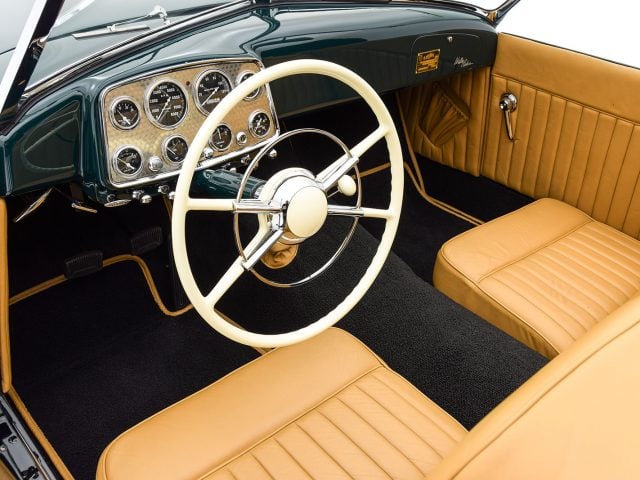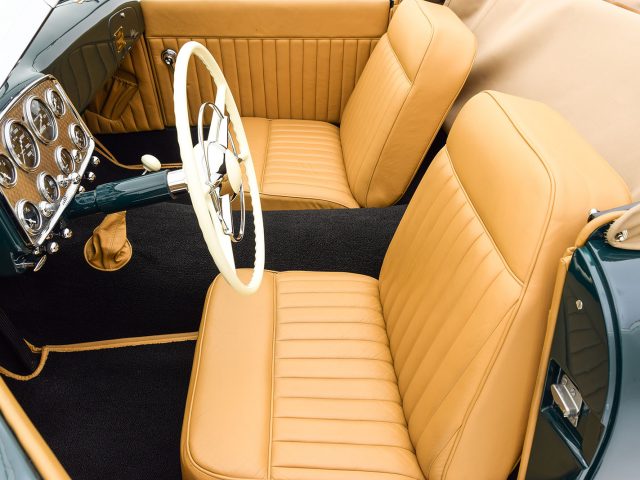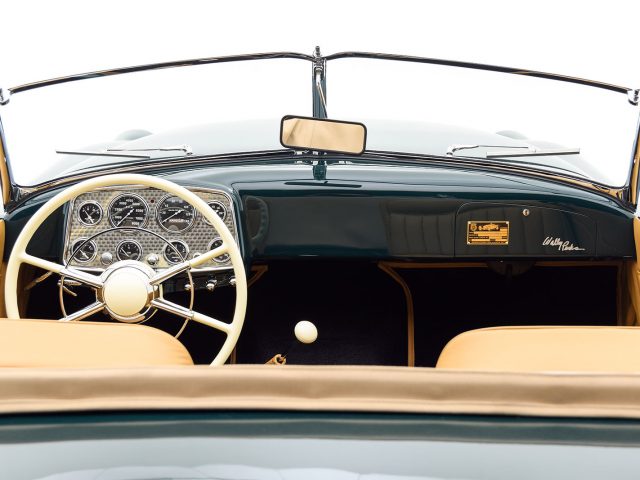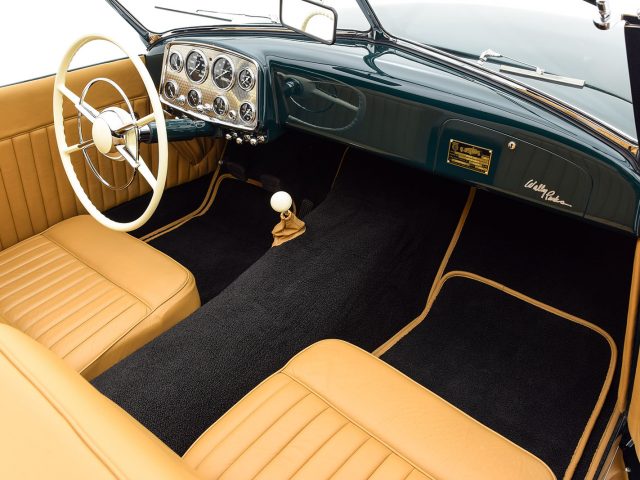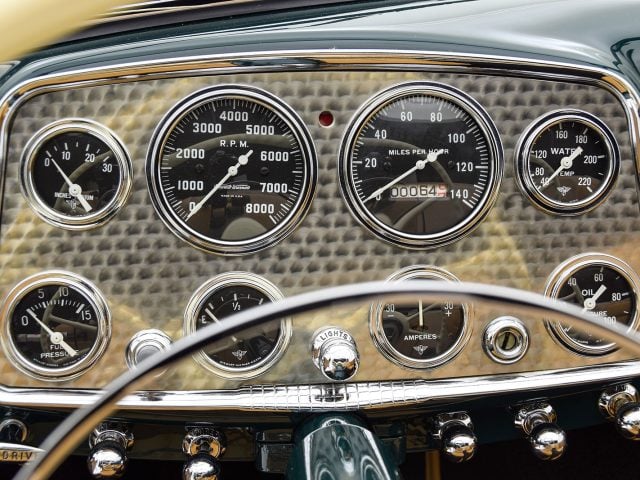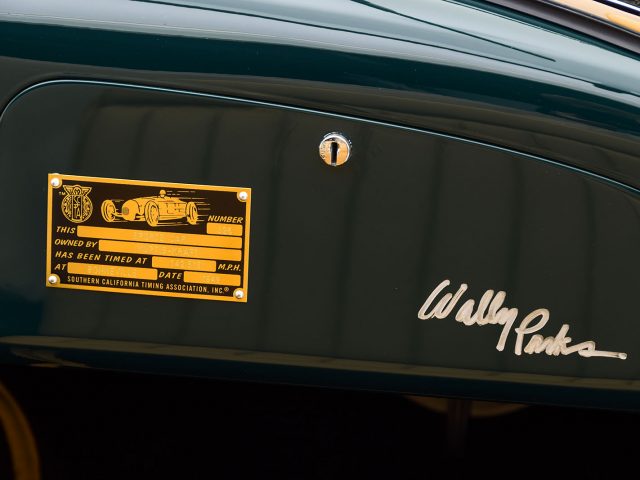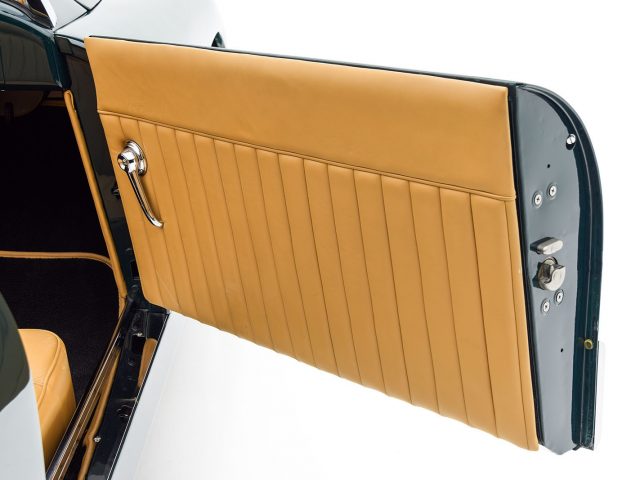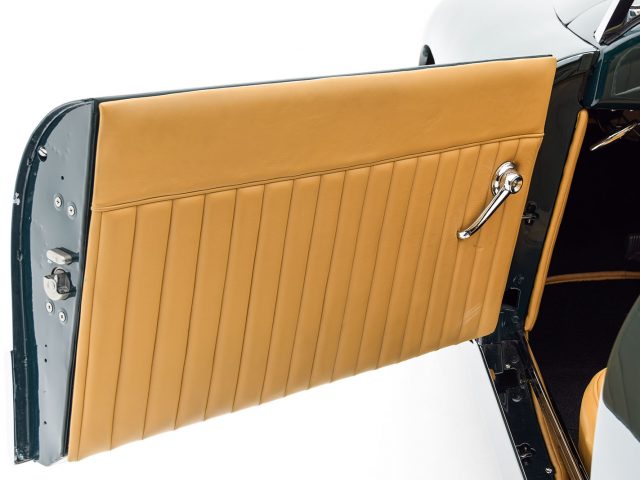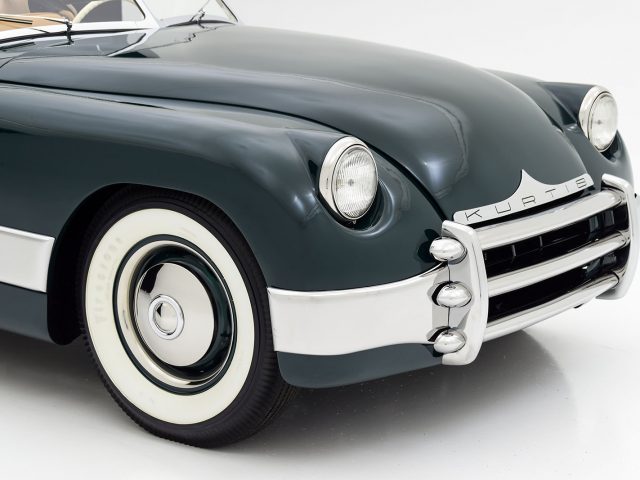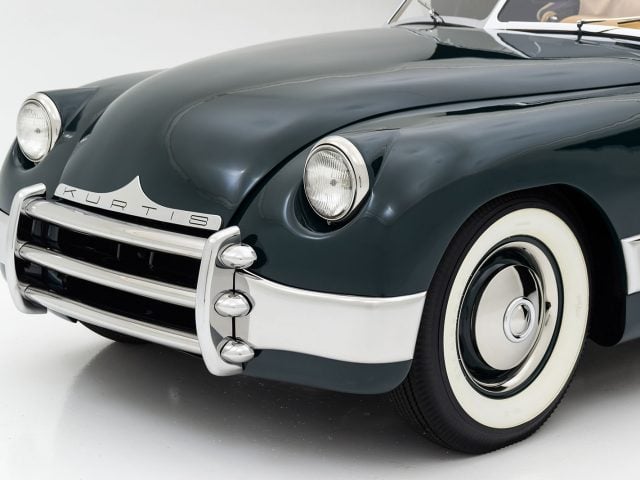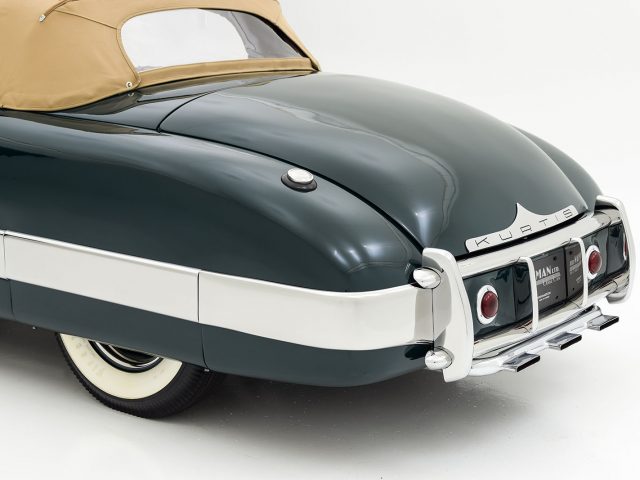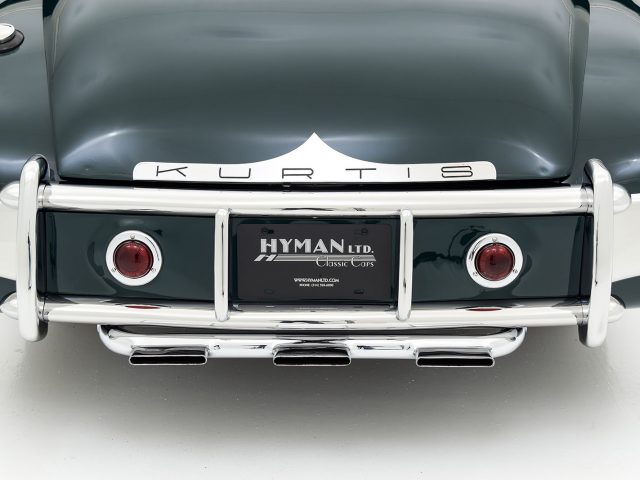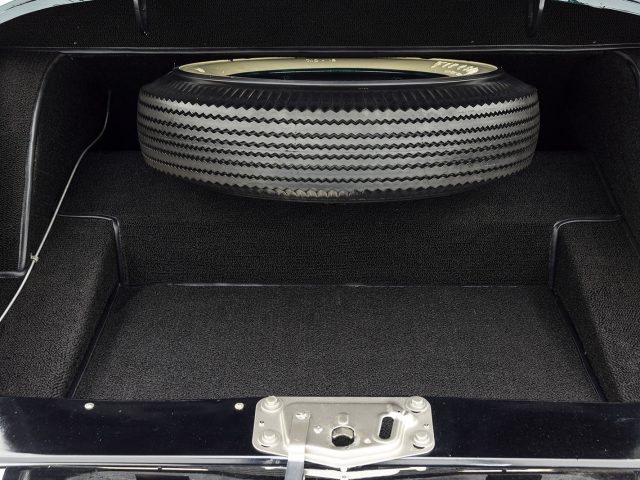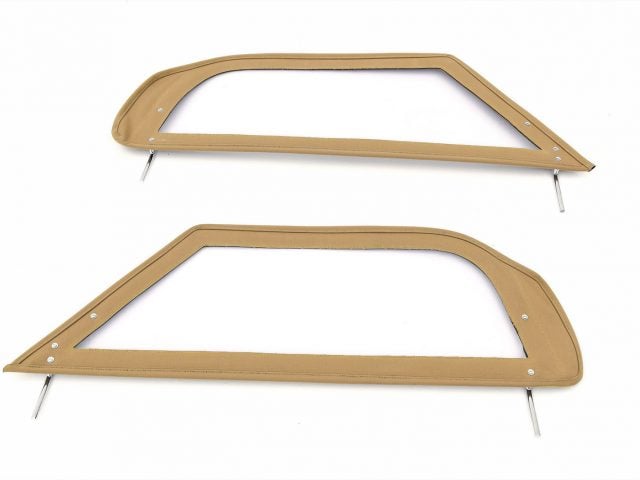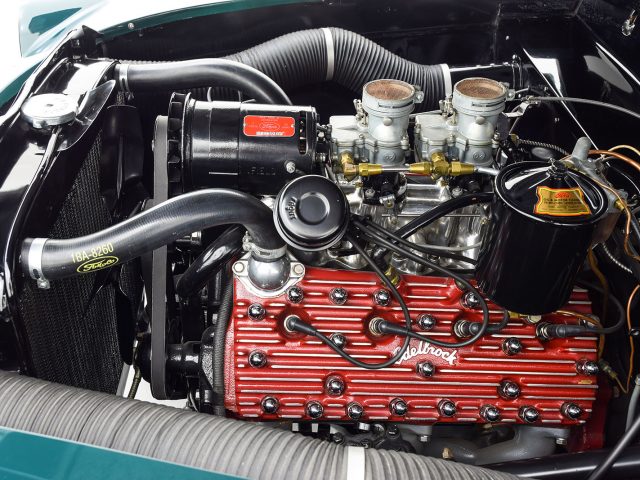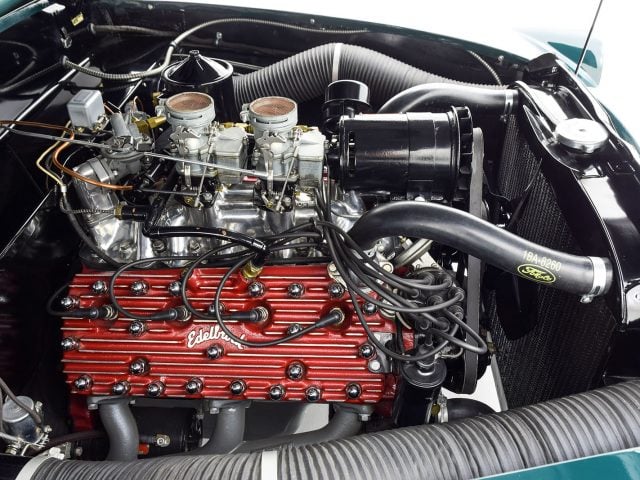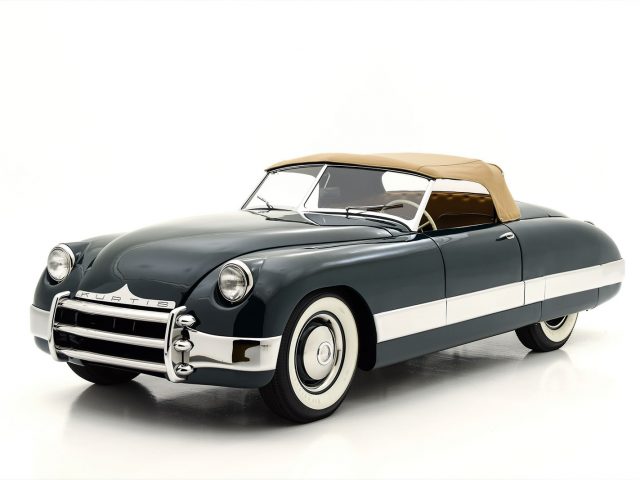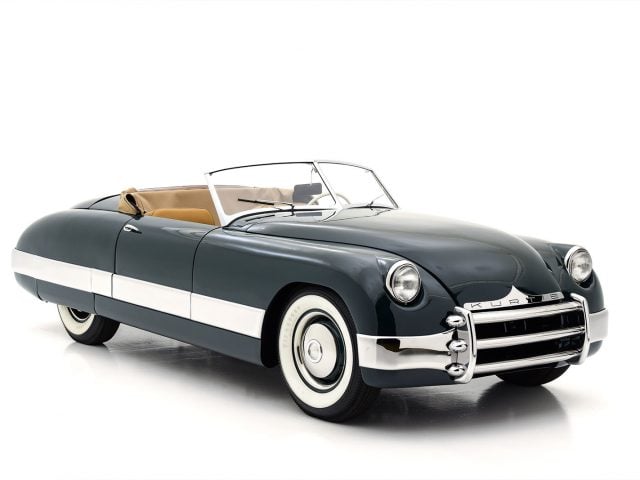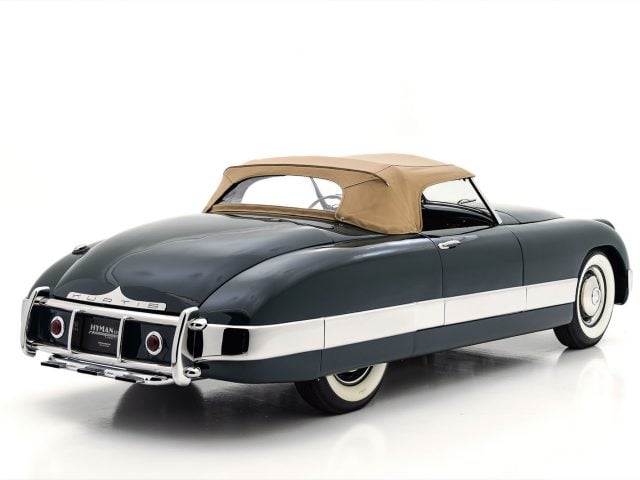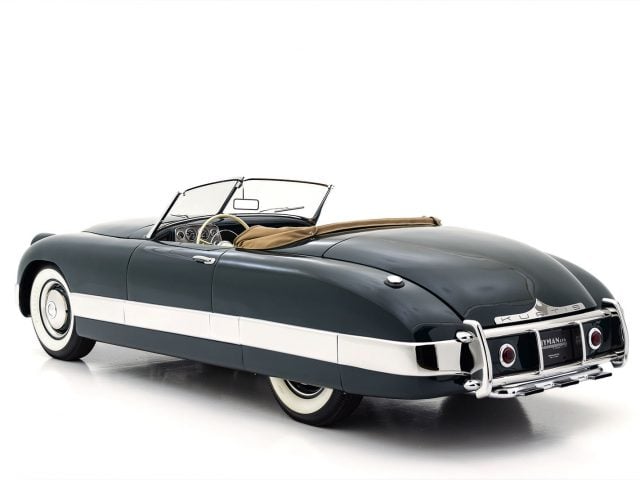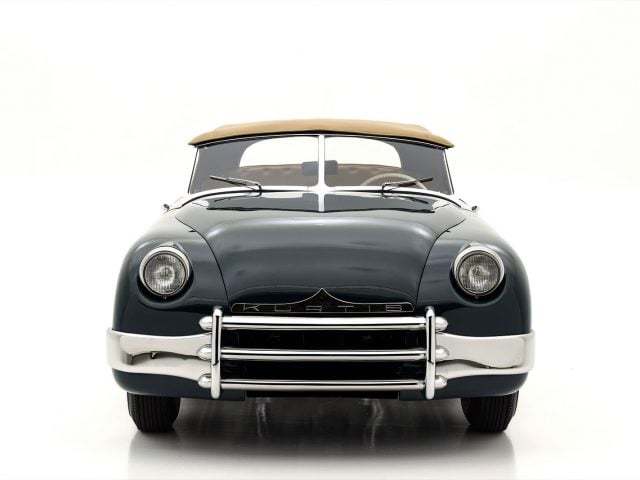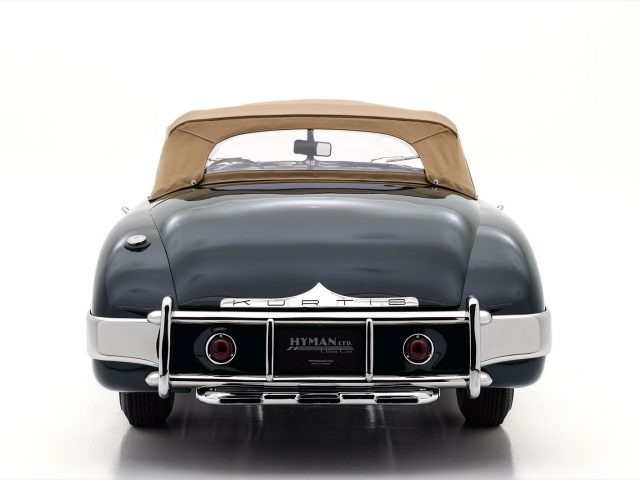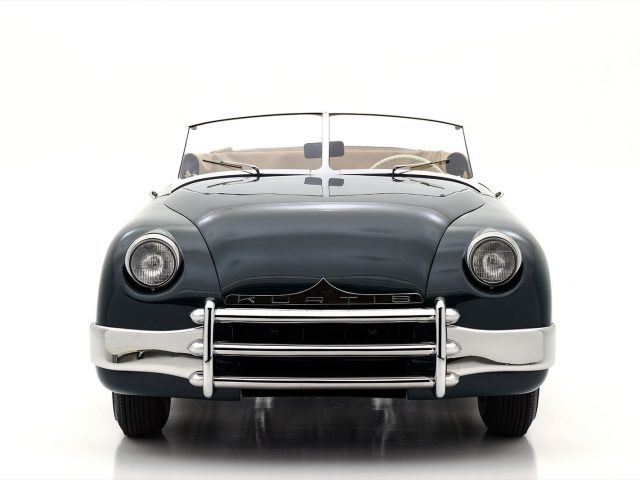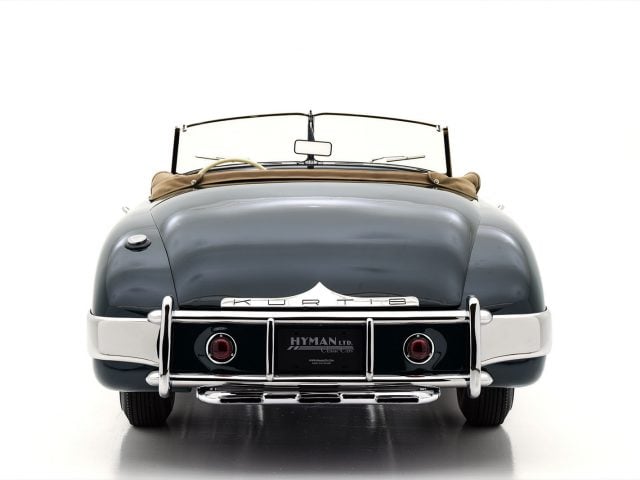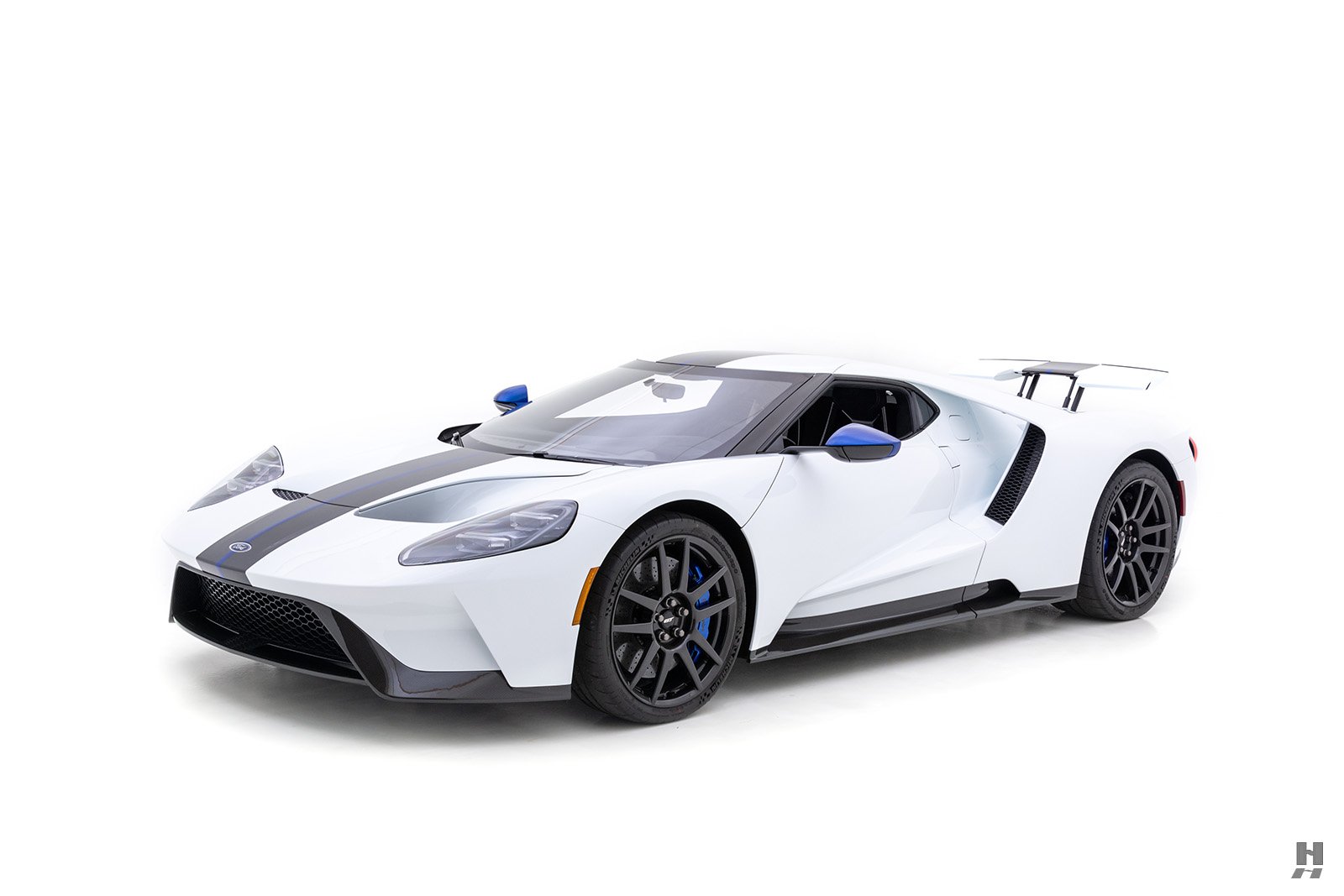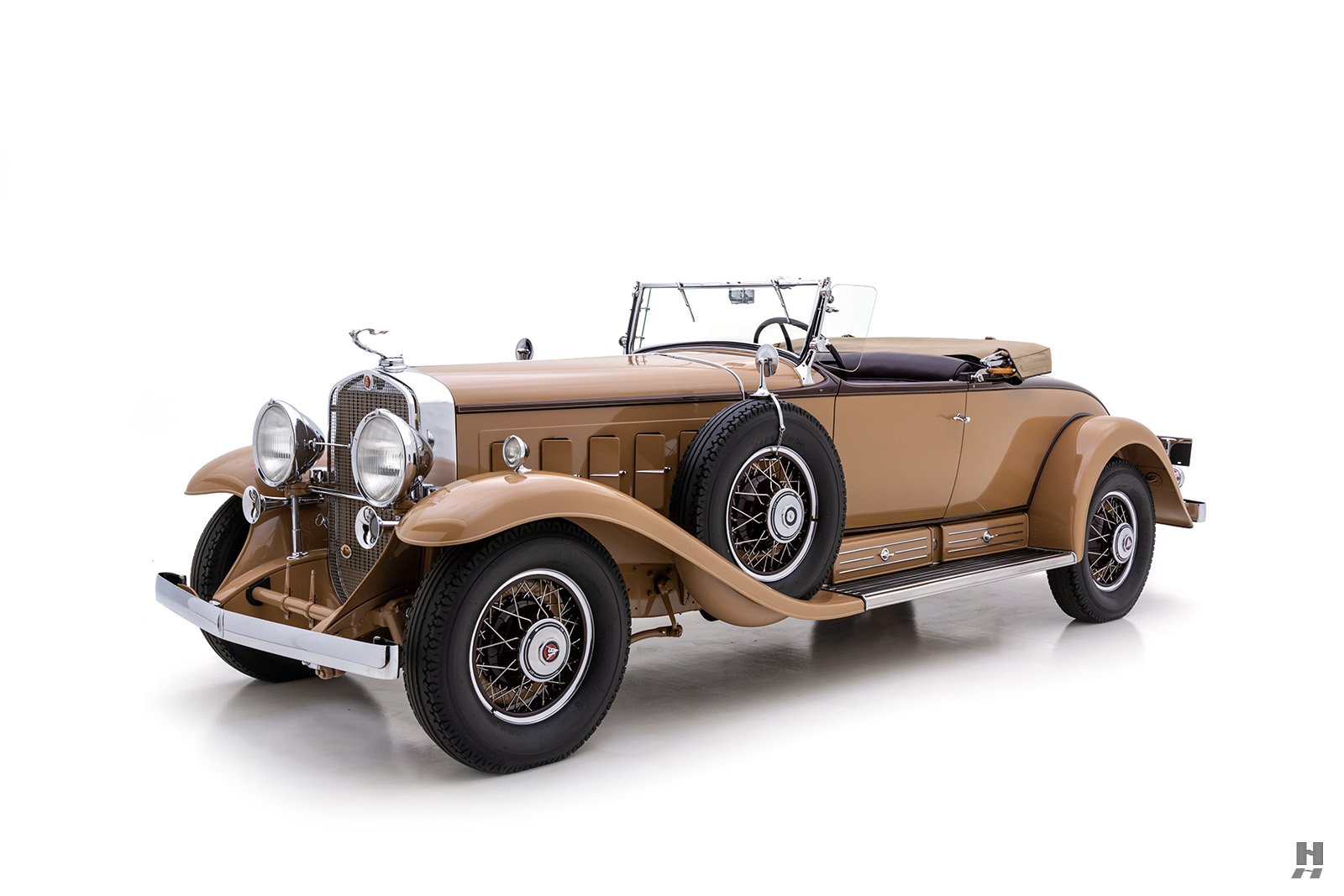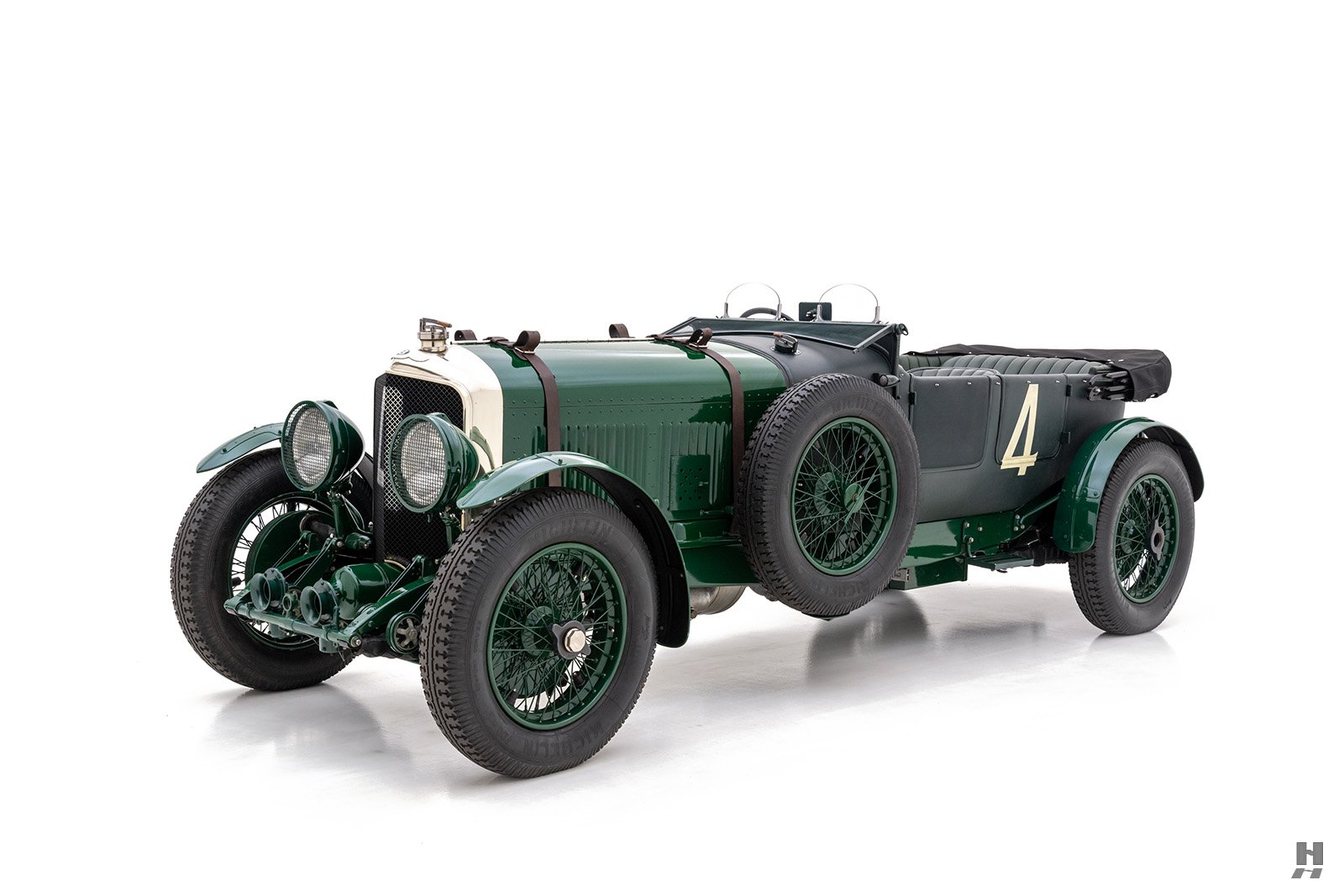Frank Kurtis needs little introduction to anyone familiar with American racing in the 1950s. His Kurtis-Kraft cars dominated American oval racing for decades, winning on everything from local dirt bullrings to Indianapolis. The son of an immigrant Croatian blacksmith, Frank Kurtis got his start in the car business at 14, when his family moved to Los Angeles and he took an apprenticeship with Don Lee Coach and Body Works. Don Lee Coach built custom bodies for luxury automobiles, particularly for the Hollywood elite. It is also coincidentally the same place where a young Harley Earl got his start in the industry. From the start, Kurtis displayed natural fabrication talents, and in his off hours, produced a number of one-off customs for private clients.
In the 1930s, Kurtis began focusing on the construction of race car chassis. His exquisitely constructed cars were so admired that one was nicknamed “the jewel box” by competitors. Success brought demand for his chassis and starting in the 1930s over 1,100 Kurtis Kraft midgets were built as the cars of Frank Kurtis became the hot ticket in open wheel racing. That legend that would continue through the 1960s with 5 Indy 500 victories and countless wins on local tracks across America.
While Kurtis was building his successful Midget, Sprint and Indy car business, he kept his team busy in the off season by building Hollywood movie cars and one-off specials. In 1948, he built a unique sports car based on a wrecked ’41 Buick, and the car caused such a sensation that he decided a production version would be the perfect way to expand his business into a new market. At first, Frank made an agreement with Studebaker to supply suspension components and their upcoming OHV V8 engine. Based on a reworked Champion chassis, the car would be designed and built by Kurtis, and sold through Studebaker dealers. But production delays with the V8 saw Frank Kurtis grow increasingly impatient. His first prototypes used Studebaker’s inline six (even a Lea Francis engine was planned!), the first naturally aspirated, then later supercharged. Despite positive reviews from the likes of Tom McCahill of Mechanix Illustrated who tested the supercharged six-cylinder prototype, Kurtis felt that Ford’s flathead V8, with a few choice upgrades, would provide the motivation he required. A deal was struck with Benson Ford (William Clay Ford’s brother) to provide a supply of V8s and when production began in 1949, the Kurtis Sports used a combination of Studebaker underpinnings with Ford V8 power, wrapped in a modern and unique streamlined body of fiberglass, steel and aluminum. It is believed that about 15 Kurtis Sports were built before Frank was persuaded to sell the rights to Earl “Madman” Muntz who stretched the chassis to accommodate four seats and fitted Cadillac V8 engine, softening the car and turning the Kurtis Sports into a boulevard cruiser.
Our featured 1949 Kurtis Sports is Chassis number KB003, the very first production car and arguably the most famous of all the cars built. This very special example was Frank Kurtis’ personal car which he used extensively to promote the project. From new, this car was fitted with a hot Ford 8BA “stroker” built by Vic Edelbrock himself with Edelbrock heads, Offenhauser intake and twin Stromberg 97s. In 1949, the Kurtis was brought to the Bonneville Salt Flats to take part in the very first Bonneville Nationals, where, in the hands of Wally Parks (famously the founder of the NHRA and first editor of Hot Rod Magazine) KB003 was driven to a sports-car class world record two-way average of 142.515 miles per hour.
After Bonneville, a milder Ford V8 was installed and KB003 remained with the Kurtis family, with both Frank and his son Arlen enjoying it on the road. It was later sold to a racer from New York, where it is believed to have gained a Cadillac engine. It may have been a bit of a handful with the Cadillac power, as the body sustained some damage in the hands of some less-than-talented drivers. The car was eventually discovered in the mid-1970s by Charles Treadway of Iowa who purchased it from Ms. Genevieve Cowan. Treadway began a restoration but soon sold it to Marlin Weakly of Moline, Illinois in the late 1970s. Both Treadway and Weakly had corresponded with Frank Kurtis in attempt to get parts and information relating to this very unusual automobile, but alas, the restoration would stall until many years later.
In the hands of the most recent owner, a collector and aficionado of unusual sports cars, the Kurtis Sports was finally treated the comprehensive restoration it so deserved. Thoroughly researched, KB003 was returned to its original specification using a Ford flathead V8 with period speed parts including Edelbrock heads, twin Stromberg 97s and an Offy 2 x 2 intake – all genuine parts sourced from early hot rod experts. The body was completely restored and finished to a high standard in dark green and the extensive chrome – including the signature wide band that wraps around the car- was beautifully refinished. The missing windscreen frame was recast using an original template, and numerous other key items sourced using the help of Arlen Kurtis and others.
Since its restoration, KB003 has been shown at prestigious concours and has been featured in both Hot Rod magazine in 2009 and volume 10 of Hop Up magazine. It remains in fine form showing in excellent condition, with the restoration having matured very slightly. Green paintwork is very good, the tan leather upholstery remains taut and supple, and the black nylon loop carpets maintain a period correct look. The dash wears a full set of correct S-W instruments in an engine-turned fascia and a plaque from the So Cal Timing Association proudly declaring this as the very car Wally Parks used to set his record. The sale of this important motorcar will include numerous photos, correspondence with the likes of Frank and Arlen Kurtis, copies of the SCTA time sheets, and notes related to the restoration.
KB003 is so much more than just a home-grown special, Frank Kurtis applied the same attention to detail and quality when he built the Sports that he used for his racing cars, and Hot Rod Magazine perfectly describes it as the world’s first “Sports Rod”. This very car was at the forefront of the American sports car revolution and will be a welcome addition to any collection of important rods, sports cars or racers.
Sorry this car has been sold. Are you looking to buy or sell a car like this? Contact a representative
For immediate assistance please call us at +1-314-524-6000 or please fill out the following form and a member of our team will contact you.

